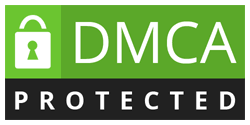Summary : Polish your grades for perfection through proofreading! This post reveals how editing enhances clarity, catches grammar slip-ups, and sharpens your ideas. Learn expert steps, peer review hacks, and editing tools that turn rough drafts into gold standard academic projects. Master the final touches with us and make every assignment stand out brilliantly!
The difference between the right word and the almost right word is the difference between lightning and a lightning bug. Mark Twain
So, separate brilliance from blunder just like lightning from a lightning bug. The most underestimated yet one of the most important stages of writing an online assignment is proofreading and editing. They are the final quality checks that determine whether your work shines or stumbles. The first draft may contain your ideas, but it is the final polish that reveals your academic brilliance. The way you revise and refine your content speaks volumes about your commitment to excellence then whether it is an essay, a discussion post, or a complete research paper.
The following post is your step-by-step guide to mastering the skill of proofreading and editing online assignments. We have got your back, ranging from understanding why it matters to discovering how to catch grammar mistakes and awkward phrasing. You will learn the practical techniques, editing steps, and even powerful tools to elevate the quality of your writing. Ready to turn your assignments into an academic masterpiece? Continue reading!
Let our subject specialists help you write your dissertation as per your requirements at significantly affordable prices!


It's fast and risk-free
Importance Of Proofreading In Online Assignments
Did you know that 59% of online assignment mistakes are due to poor grammar and overlooked typos? If you don’t want to make the same mistake, then make sure you are proofreading your content before final submissions. It is because proofreading is not just a final step; it is a critical quality control process that ensures your ideas are communicated clearly and professionally.
You can eliminate grammatical errors, unclear sentences, and formatting inconsistencies through proofreading, as all these mistakes can distract or confuse your reader. Once you realize the importance of proofreading, you will seek online assignment help, but won’t ever overlook this stage. It is because the whole purpose of proofreading is to refine your assignment, to reflect your best academic self, and to show attention to detail, which is a key factor in acquiring higher grades.
How Proofreading Reflects Your Commitment To Quality?
A thoroughly proofread assignment shows that you care about your work. Careless grammar or spelling mistakes suggest a lack of seriousness, even if your ideas are strong.
How Proofreading Helps You Avoid Miscommunication?
Incorrect sentence structure or punctuation can change the meaning of your message. Proofreading clears up any potential confusion while making your arguments sharper and easier to understand.
How Editing Enhances Professionalism?
Well-edited assignments show you value precision then whether you are a college student or a professional employee. This makes a strong impression on your professor or evaluator.
How Proofreading Improves Your Writing Over Time?
Regularly proofreading your work builds writing discipline. You begin to spot your own habits, like overusing certain words or constructing run-on sentences, and can fix them accordingly.
How Editing Improves Clarity And Flow?
Editing is not just about removing errors, it is also about improving the flow of ideas. A good edit ensures that each sentence connects smoothly to the next and each paragraph contributes meaningfully to your argument. This process involves reorganizing content, shortening overly complex sentences, and adjusting transitions to enhance readability. In short, editing brings balance between your thoughts and their presentation by turning a rough draft into a cohesive plus engaging piece of writing.
You will never fine prices as low as ours elsewhere! grab the opportunity to get unimaginable discounts now!

It's fast and risk-free
Steps To Edit Your Assignment Like A Pro
Editing is an art that improves with practice, but you can also master this art by following some easy yet effective steps. A structured process of editing can help even beginners produce polished and impactful work. Some expert-approved steps to guide you through the process of editing include;
Step Away Before You Edit
Don’t jump into the process of editing, soon after you are done with the writing stage. This mental break helps you return to the text with fresh eyes and a clearer perspective.
- Take a 1–2 hour break or edit the next day.
- Let your brain reset from writing mode.
- Approach the content as a reader, not a writer.
Read For Structure First
Ensure the overall organization is sound before diving into fixing grammatical mistakes. Is your thesis clear? Do your points build logically?
- Look at your headings and transitions.
- Check if the introduction and conclusion match the content.
- Ensure each paragraph contributes to your main idea.
Focus On Clarity
Be direct and concise. Remove complex or filler words that dilute the real meaning or context of the assignment. Ensure your tone fits the academic context.
- Replace vague phrases with specific terms.
- Avoid repetition.
- Use strong verbs instead of passive voice.
Check Sentence Variety And Rhythm
There is already too much monotony in life, nobody wants to read monotonous content as well. Monotony in sentence structure can bore readers. Vary sentence lengths and openers to maintain interest and improve pacing.
- Mix short and complex sentences.
- Use transition words for a smooth flow.
- Watch out for overused patterns.
Be Brutal With Redundancy
Cut unnecessary sentences. If a sentence does not add value or repeat an earlier point, remove or rework it.
- Delete duplicate statements.
- Combine repetitive points.
- Choose one strong word over two weak ones.
How To Spot Grammar And Spelling Errors?
Grammar mistakes can take away the light, even from the most brilliant ideas. Slow down your reading pace and examine each sentence individually to catch those grammatical mistakes and spelling errors. Read backwards, starting from the last sentence, to focus on sentence-level accuracy. Use spellcheck, but don’t rely on it blindly, as it often misses homophones and context-related errors. Some effective tips to improve grammar and spelling accuracy are:
- Read your text aloud for awkward phrasing.
- Check common culprits: subject-verb agreement, tense consistency, and punctuation.
- Keep a grammar checklist nearby.
- Use tools to double-check spelling, especially for academic jargon.
Benefits Of Reading Aloud While Editing
Reading aloud is one of the most effective proofreading techniques. It helps you catch irregular phrasing, missing words, and confusing sentence structures. Your ears are often better at noticing rhythm and flow than your eyes, just like you get to hear thunder before the lightning. This technique also makes it easier to spot tone issues and awkward transitions while ensuring your writing sounds natural and professional. Some of the benefits of reading your content aloud include:
- Instantly highlights run-on sentences and fragments.
- Makes it easier to hear repetitive words.
- Helps improve sentence rhythm and flow.
- Slows you down to enhance focus.
The Role Of Peer Review In Assignment Editing
Getting another set of eyes on your work can be a game-changer. Peer reviewers can spot unclear arguments or inconsistent tone that the writer might overlook. They provide a fresh perspective and may even suggest stronger evidence or clearer transitions. Peer feedback not only improves the current draft but also sharpens your editing instincts for future assignments. Why does it matter? Find out:
- It offers unbiased feedback.
- Blind spots in logic or grammar are exposed.
- It provides suggestions to improve tone and clarity.
- It helps ensure your assignment meets academic expectations.
Never Miss Your Deadlines! We work on your projects diligently and deliver it under the agreed upon timeframe, so you will always meet your deadlines without any delays.

It's fast and risk-free
Common Mistakes To Catch During Proofreading
Identifying mistakes is essential because without recognizing the mistakes, you cannot fix them, which can straightaway affect your grades. Mistakes in grammar, word choice, or structure distract readers from your core message. Spotting and correcting them ensures that your ideas are shining clearly and effectively. Some of the common mistakes made by students, along with their possible solutions, are mentioned below:
Their/There/They’re Confusion
Solution: Read aloud and use context to confirm meaning.
Missing Commas Or Run-On Sentences
Solution: Break sentences into smaller chunks or add punctuation.
Subject-Verb Agreement Errors
Solution: Match singular/plural subjects with their verbs every time.
Inconsistent Tense
Solution: Stick to the past or present tense unless a shift is necessary.
Overuse Of Passive Voice
Solution: Rephrase sentences to use active voice where possible.
Spelling Errors Not Caught by Spellcheck
Solution: Use tools that detect contextual spelling mistakes.
Improper Formatting Or Citation Style
Solution: Double-check formatting guides for APA, MLA, Chicago, etc.
Top Tools To Help You Edit And Proofread Accurately
Remember that editing tools are your digital assistants. They scan your document in seconds and highlight grammar, spelling, plus style issues. Even though tools can’t replace human editing, but they can help spot hard-to-see errors and save time. Combine tools with manual proofreading for the best results. The top tools that help in editing and proofreading are:
| TOOL | TYPE | PURPOSE |
| Grammarly | Grammar/Style | Offer real-time grammar and style suggestions |
| Hemingway Editor | Style/Readability | Great for improving sentence clarity and readability |
| ProWritingAid | Grammar/Style | In-depth report on writing, style, and consistency |
| Ginger Software | Grammar/Spelling | Offers rephrasing suggestions and translation support |
| Slick Write | Grammar/Flow | Fast and easy-to-use interface |
| Language Tool | Grammar/Multilingual | Supports multiple languages |
| Microsoft Editor | Grammar/Spelling | Integrated with Microsoft Word and Outlook |
| Quillbot | Paraphrasing/Grammar | An effective paraphrasing and tone adjustment tool |
| WhiteSmoke | Grammar/Style | Works across browsers and platforms |
| Paper Rater | Proofreading/Scoring | Provides automatic scoring and feedback |
Use these tools at different editing stages; one for grammar, one for clarity, and another for structure to ensure every aspect of your assignment is polished to perfection.
Conclusion
Proofreading and editing are not optional, they are essential steps that transform a rough draft into a refined and impactful assignment. You show your commitment to quality and academic integrity by taking the time to polish your work. Every effort you make brings clarity and professionalism to your writing then whether it is using peer feedback, reading aloud, or utilizing editing tools. Make proofreading a habit, not a last-minute chore, and you will notice a powerful difference. This difference will be visible not just in grades, but also in your growth as a confident communicator.




